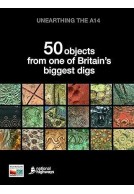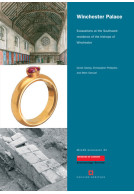Google Books previews are unavailable because you have chosen to turn off third party cookies for enhanced content. Visit our cookies page to review your cookie settings.
From Ice Age to Essex (Paperback)
A History of the People and Landscape of East London
Imprint: MOLA (Museum of London Archaeology)
Pages: 64
ISBN: 9781901992618
Published: 12th February 2006
Script Academic & Professional
Pages: 64
ISBN: 9781901992618
Published: 12th February 2006
Script Academic & Professional
You'll be £7.95 closer to your next £10.00 credit when you purchase From Ice Age to Essex. What's this?
+£4.99 UK Delivery or free UK delivery if order is over £40
(click here for international delivery rates)
Need a currency converter? Check XE.com for live rates
(click here for international delivery rates)
Need a currency converter? Check XE.com for live rates
This book presents a short history of human habitation in East London, based on archaeological findings at gravel sites between 1963 and 1999. To find the beginning of this story we have to go back half a million years, to the time when advancing ice sheets pushed the Thames southwards to its present course, depositing the river gravels that exist across East London today. Archaeological work on the East London gravels began when finds from gravel pits were given to local collectors and museums. Many spectacular discoveries were made in the era when gravel was dug by hand; they include a Roman stone coffin found near Dagenham in 1928 and the rich Early Saxon cemetery with glass drinking horns from Gerpin's Pit, Rainham, uncovered in 1937. The archaeological sites which make up this story have names which speak of a time before London's urban sprawl reached eastwards: Manor Farm, Great Sunnings Farm, Whitehall Wood, Great Arnold's Field and Fairlop Quarry, to name but a few. Discoveries have revealed the ancient landscapes of East London and a history of human occupation from the third millennium BC right up to the 19th century. The finds include evidence of where people lived, and how they made a living and viewed themselves. These settlement patterns, economic systems and cultural identities changed over time and contributed to the form of today's East London.
Other titles in MOLA (Museum of London Archaeology)...















